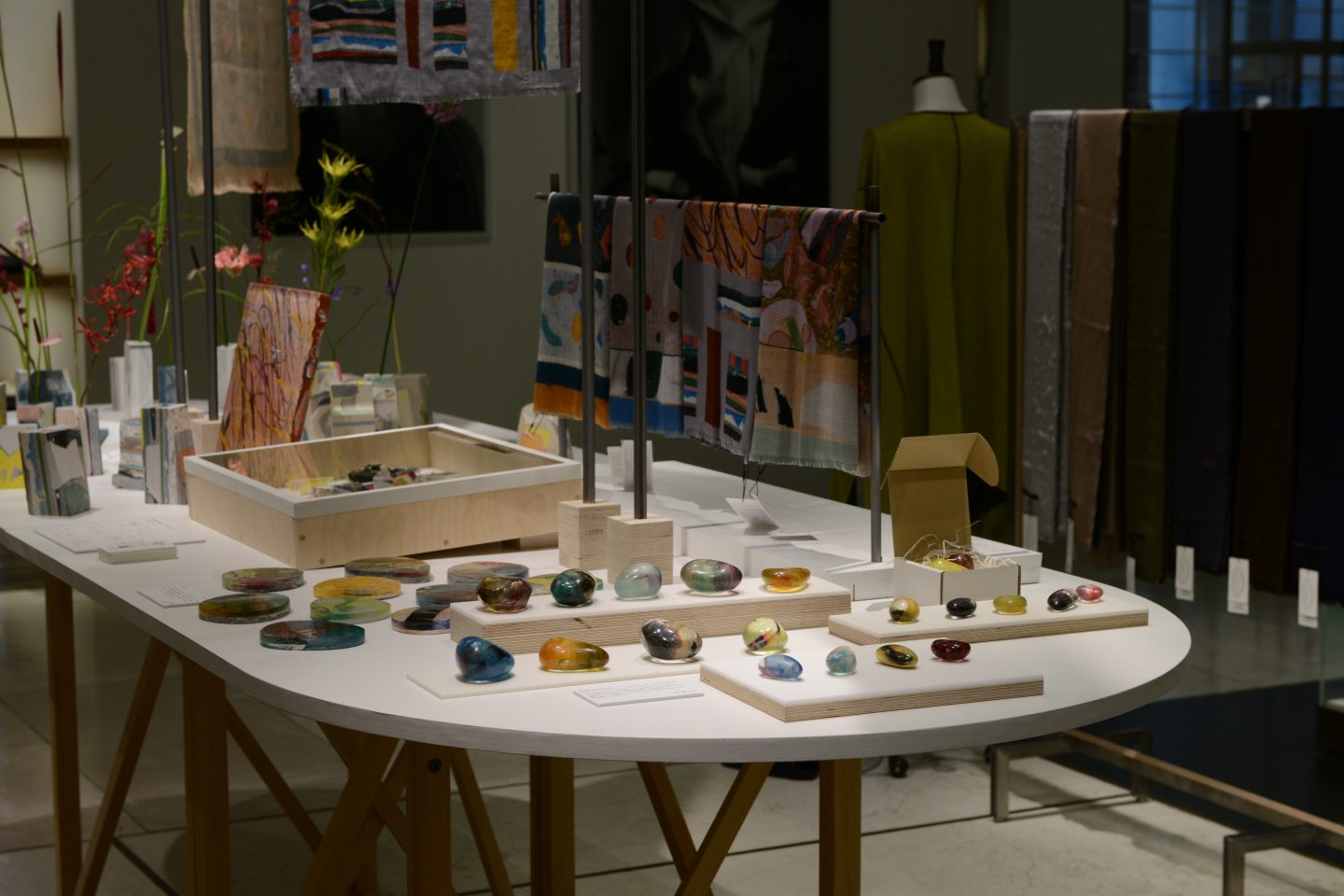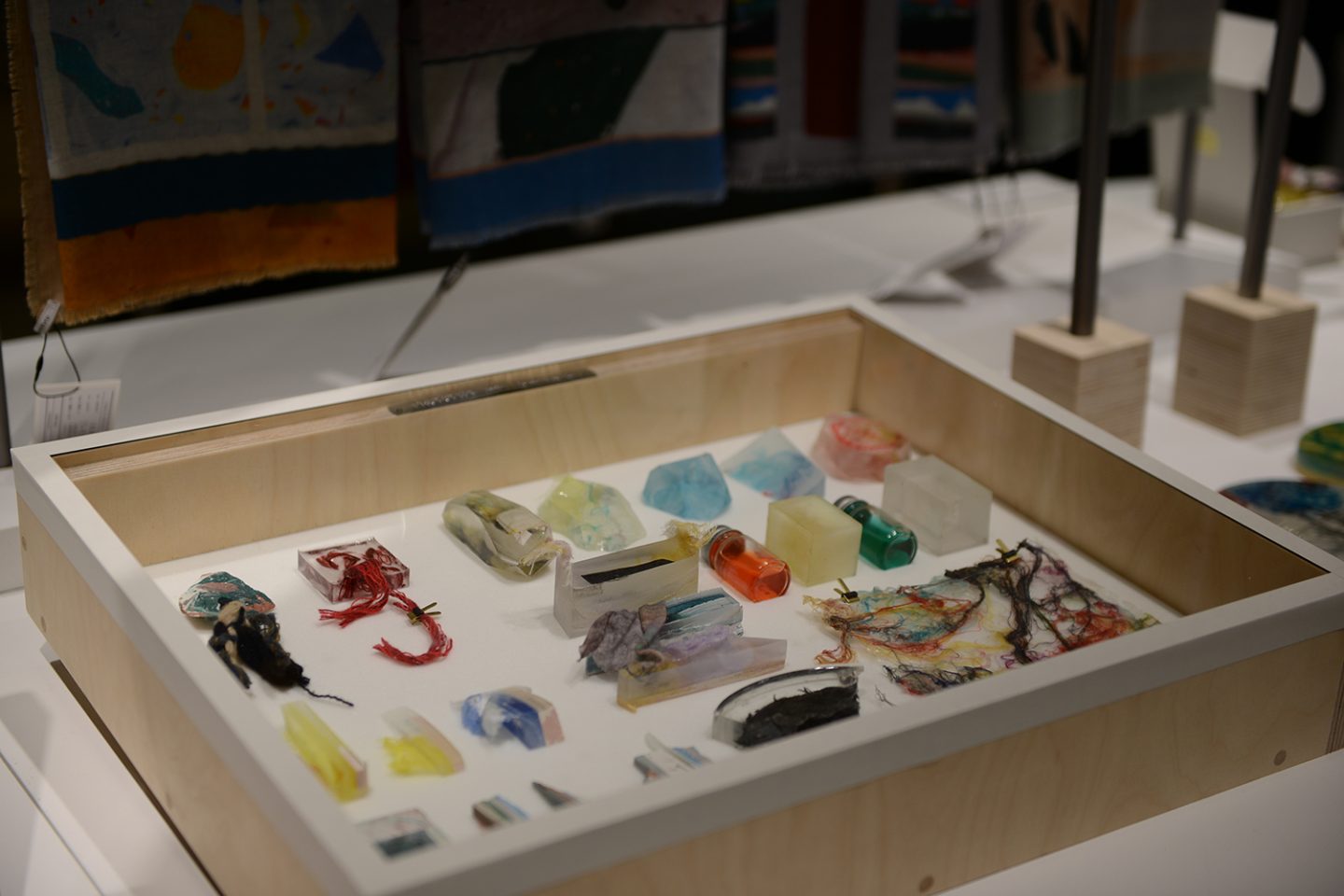1901年創業の老舗染色工場・丸枡染色とのコラボレーション作品。
Atelier maticとしては硬い素材(大理石やアクリル、水溶性樹脂など)を使うことが多い。かたや丸枡染色はシルクをはじめ、糸の染色から行いスカーフなど肌さわりの良いものを生産している。どういったコラボレーション作品が出来上がるかの挑戦であった。完成に至るまでに様々な実験を行なった。色に特徴のある大理石の加工粉を使用し染色することができるか、あるいは糸を染める染色液を使用して樹脂に色をつけることができるかなど、お互いに素材を提供しあい実験を繰り返していった。そんな中、丸枡染色が保管されていた糸(ふさ抜きというスカーフを作る工程ででるあまり)、生地のハギレなどを提供してもらい、またさらなる実験が進んだ。透明の樹脂の中に色のきれいなシルクの糸を泳がせてみたい、我々の得意とする模様や生地でレイヤーを作りたい、という抽象的なイメージの中から少しずつ解決策が見えてきた。
This work was a collaboration with Marumasu Dyeing, a long-established dyeing factory established in 1901, which produces relatively hard materials (marble, acrylic, water-soluble resin, etc.) for Atelier matic, and silk and other threads for Marumasu Dyeing. It was a challenge to see what kind of collaboration work could be achieved. The two companies provided each other with materials and repeated experiments to see if it would be possible to use marble powder, which has unique color characteristics, for dyeing, or if it would be possible to color the resin using the dyeing solution for dyeing threads. Marumasu Dyeing offered us threads (left over from the scarf making process called “fusanaki”) and fabric scraps, which they had stored for something else, and further experiments were carried out. From the abstract image of having beautifully colored silk threads swimming in transparent resin and creating layers with our specialty patterns and fabrics, a solution gradually began to emerge.
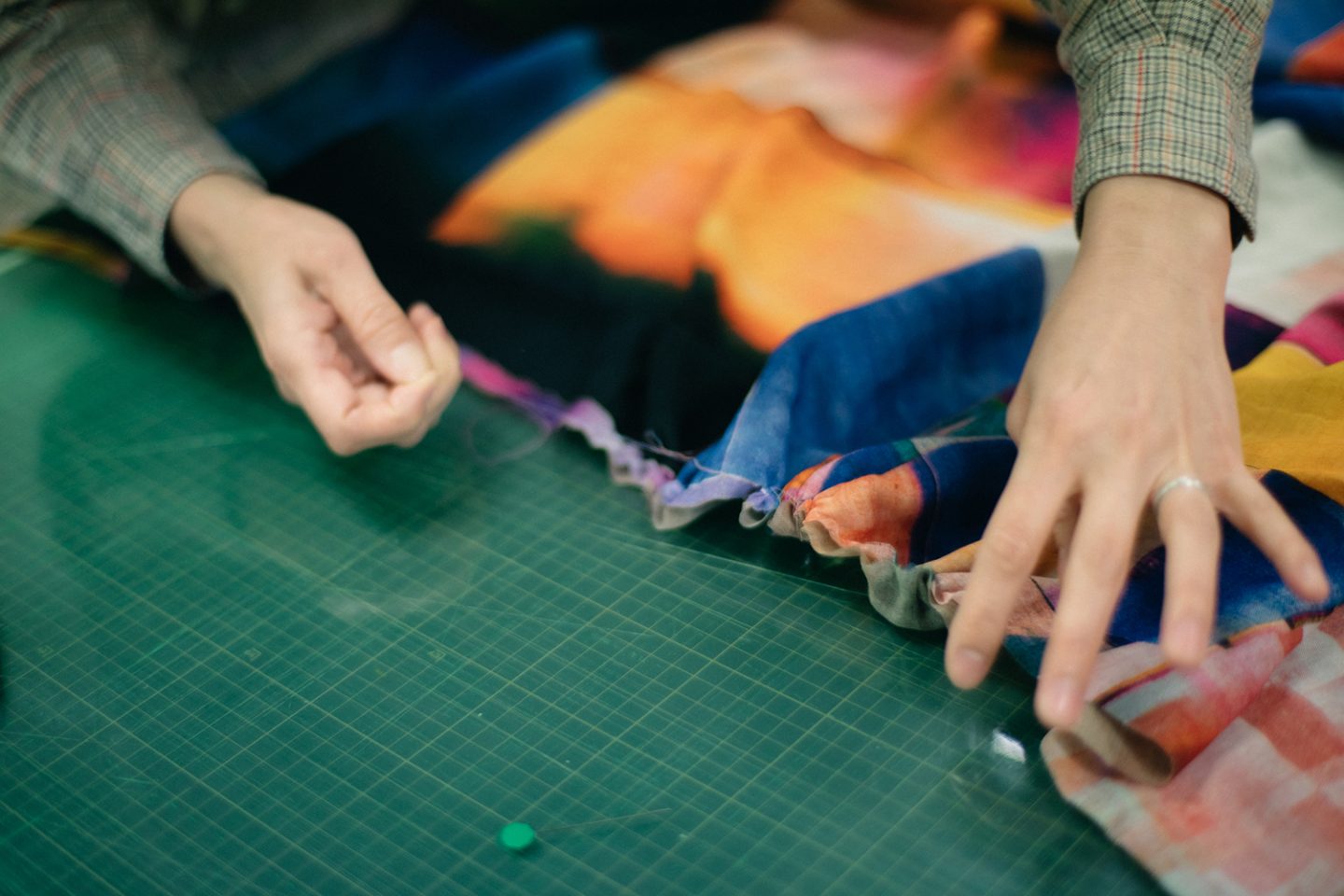
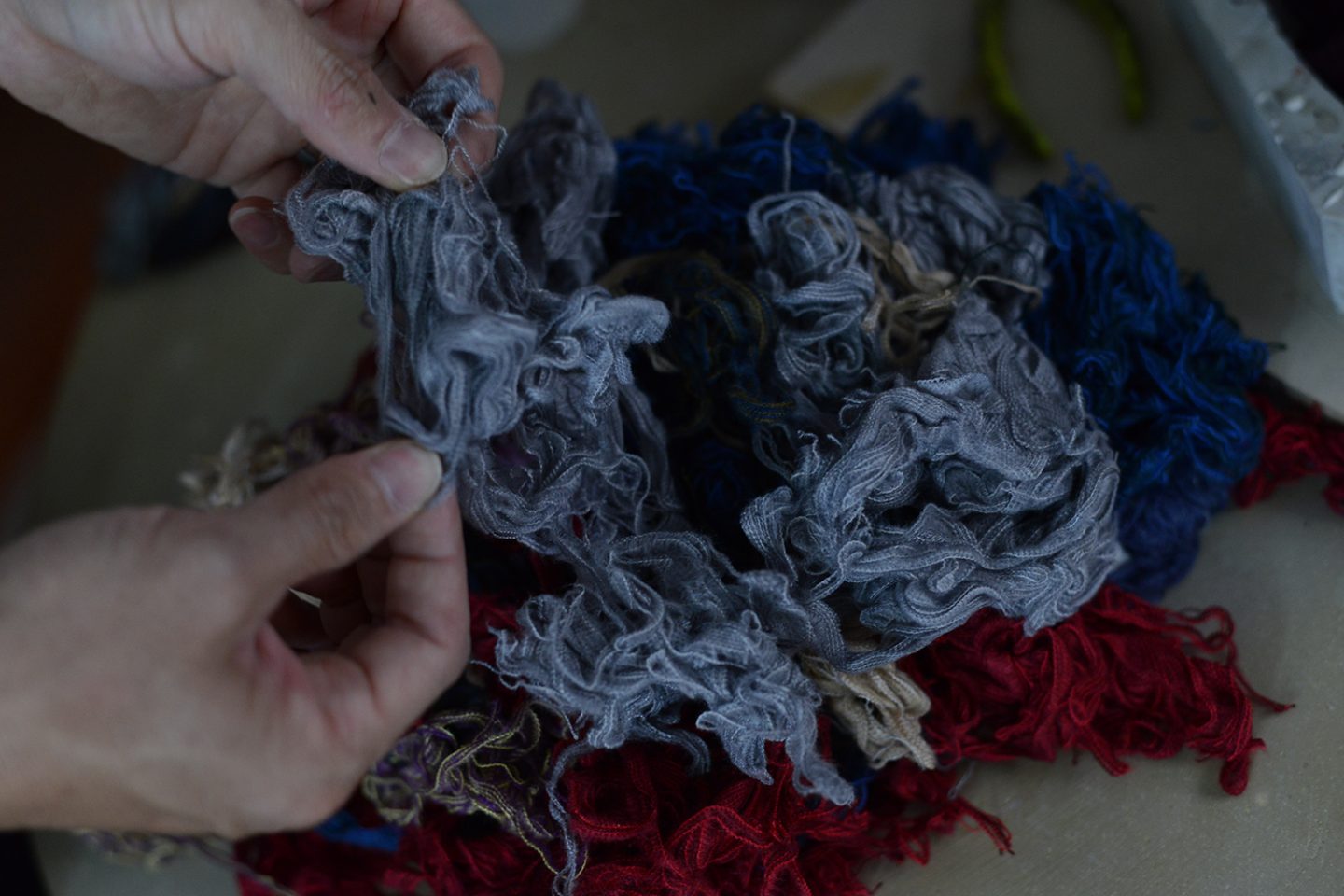

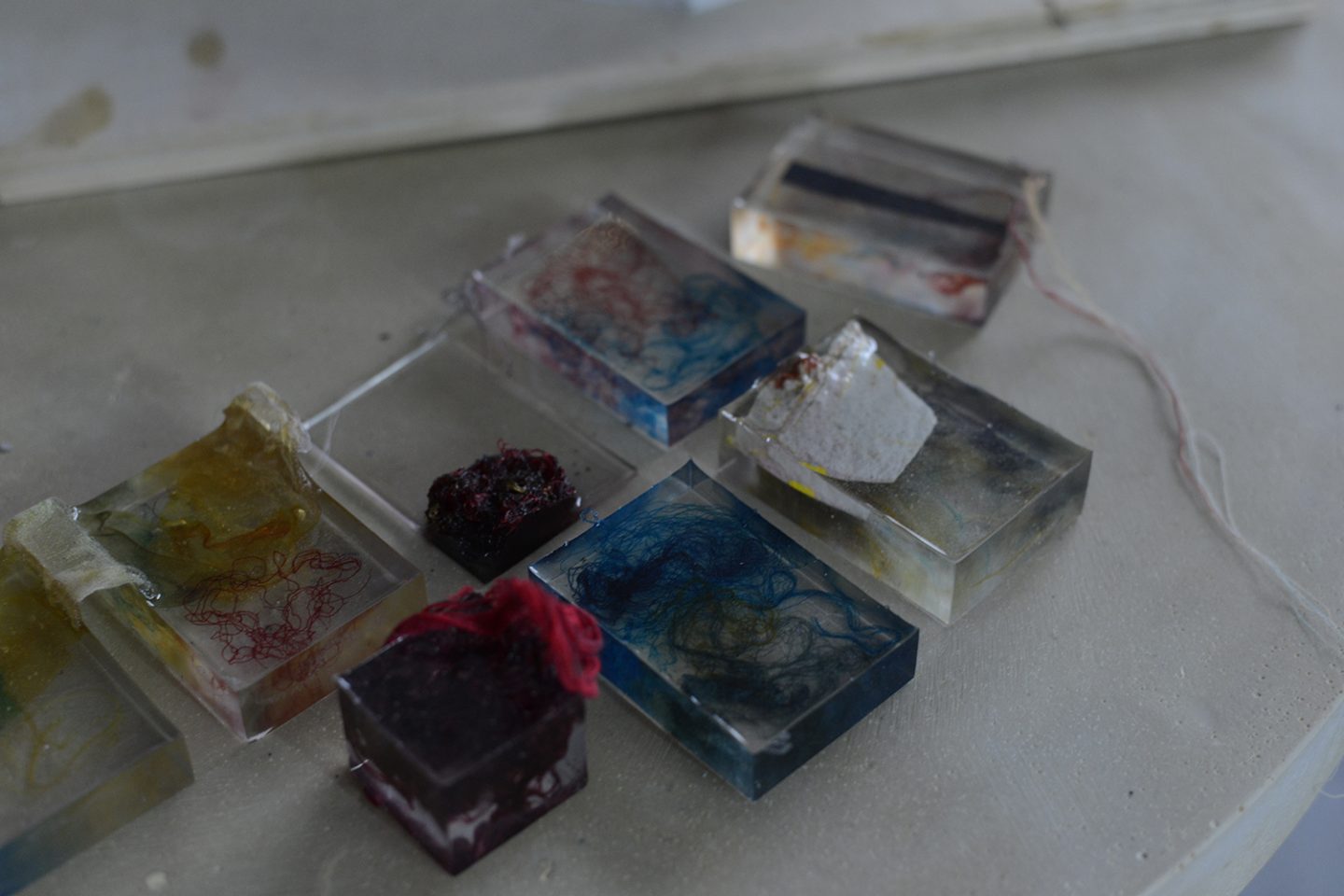
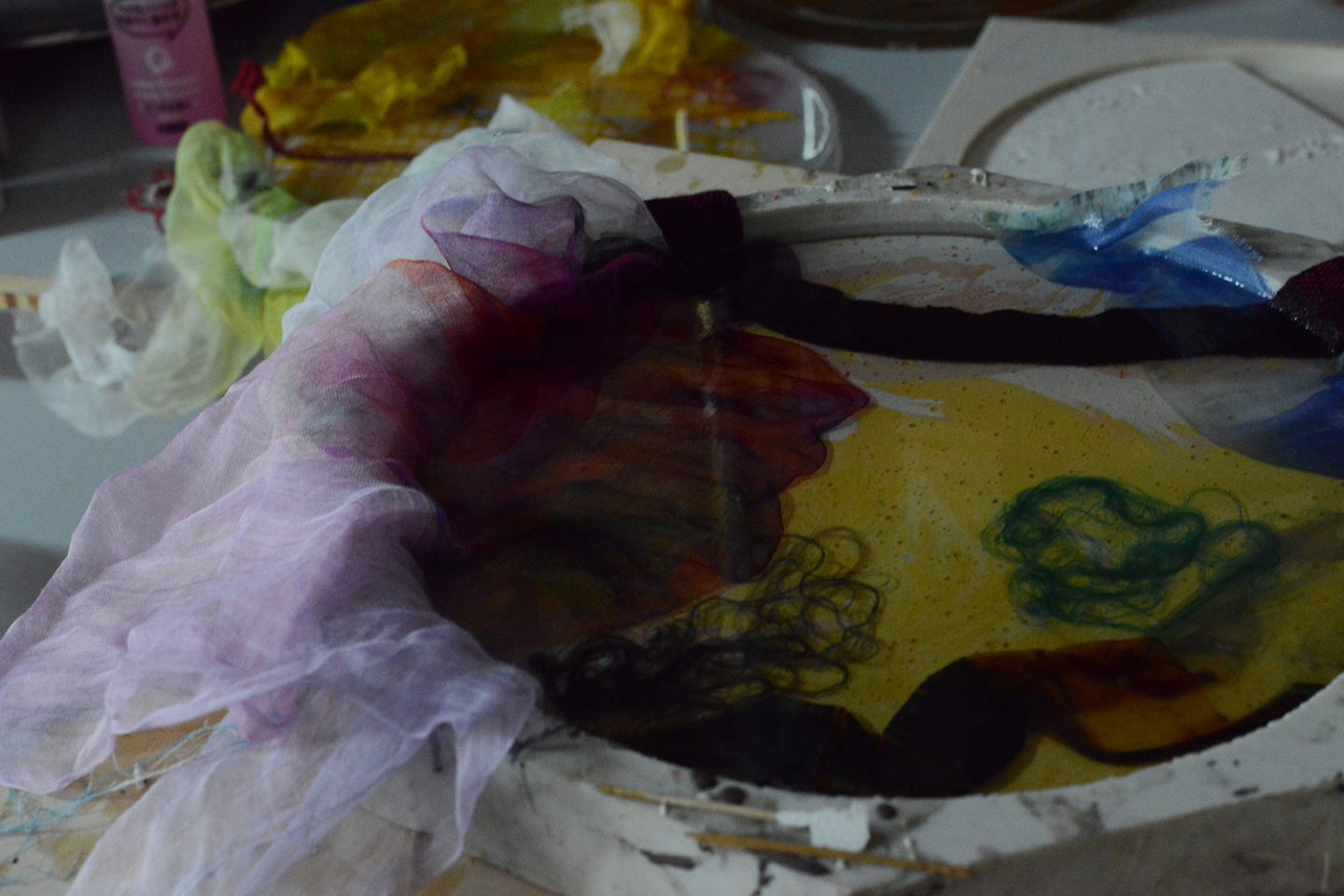
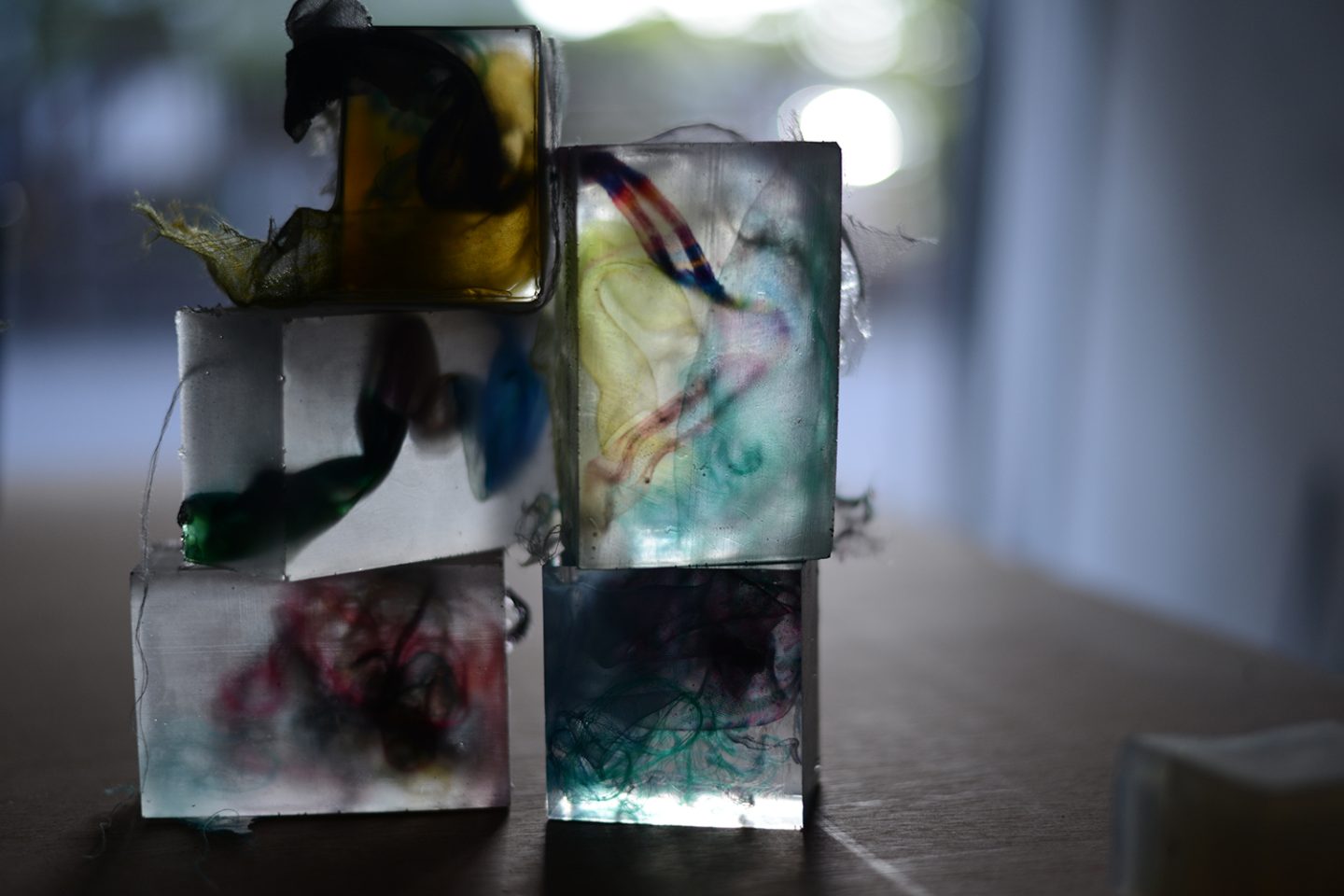

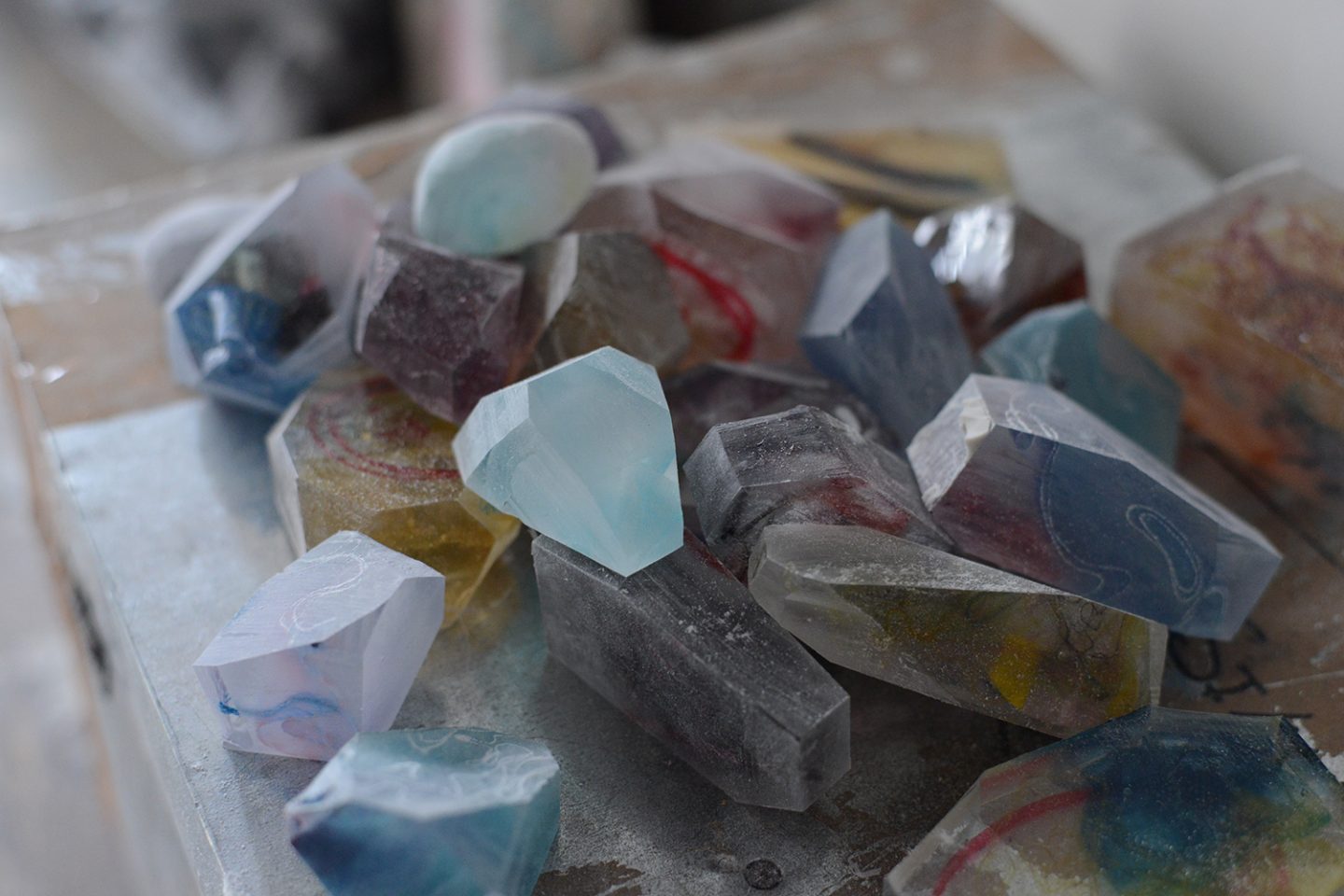

まず最初に制作したのは、Lakeと名付けたコースターのようなフリーハンドのラインの円プレートと、透明の石。繊細な生地が限られた透明の中で浮遊している。機械ではできない、ニュアンスに重きを置いたひとつひとつ手作業で形を作っていった一点ものの作品となった。
The first piece I created was a circular plate with freehand lines like a coaster named Lake and a transparent stone. Delicate fabrics are floating in the limited transparency. This one-of-a-kind piece was created by hand, one by one, with an emphasis on nuance, which cannot be achieved with a machine.
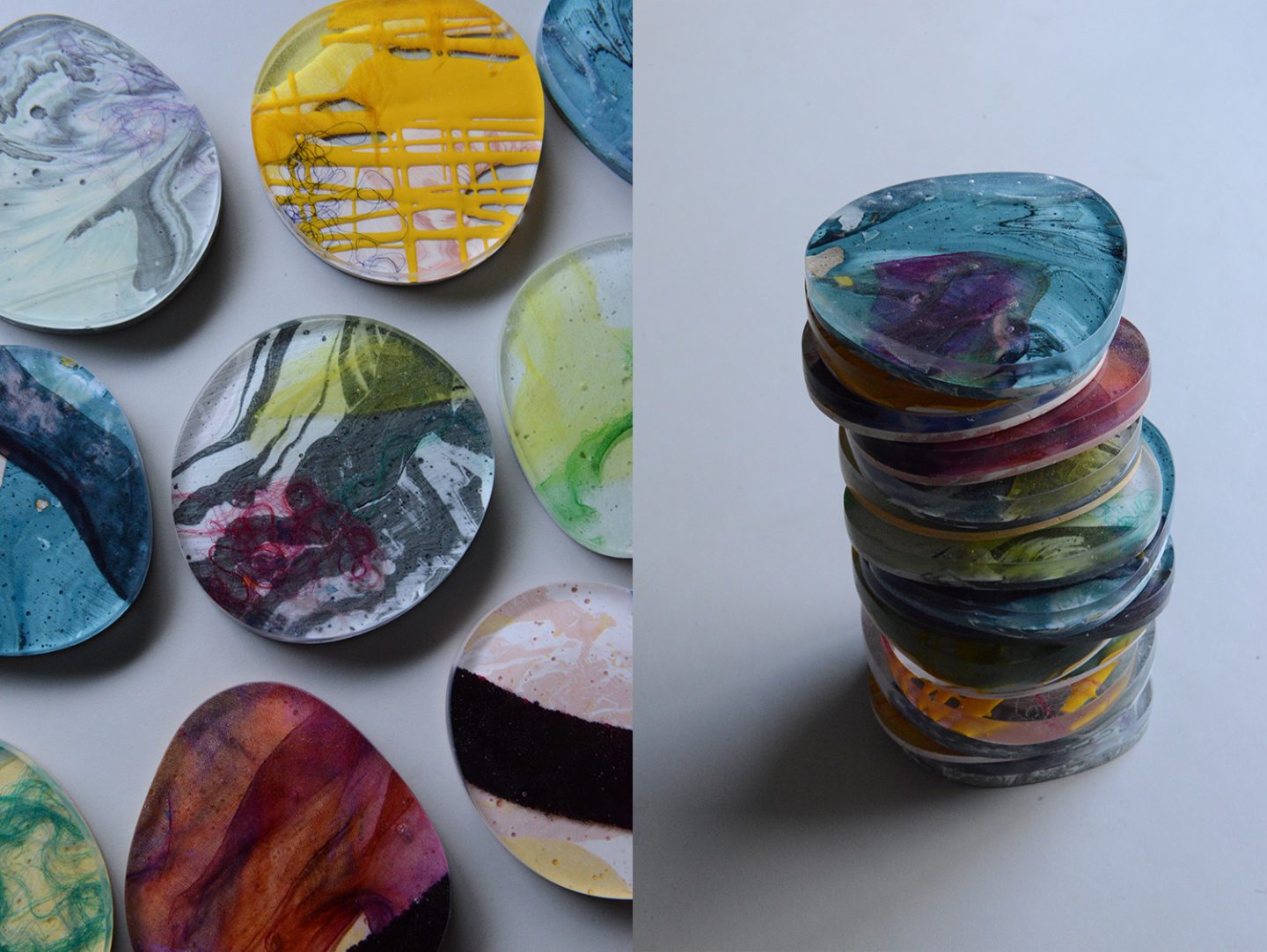
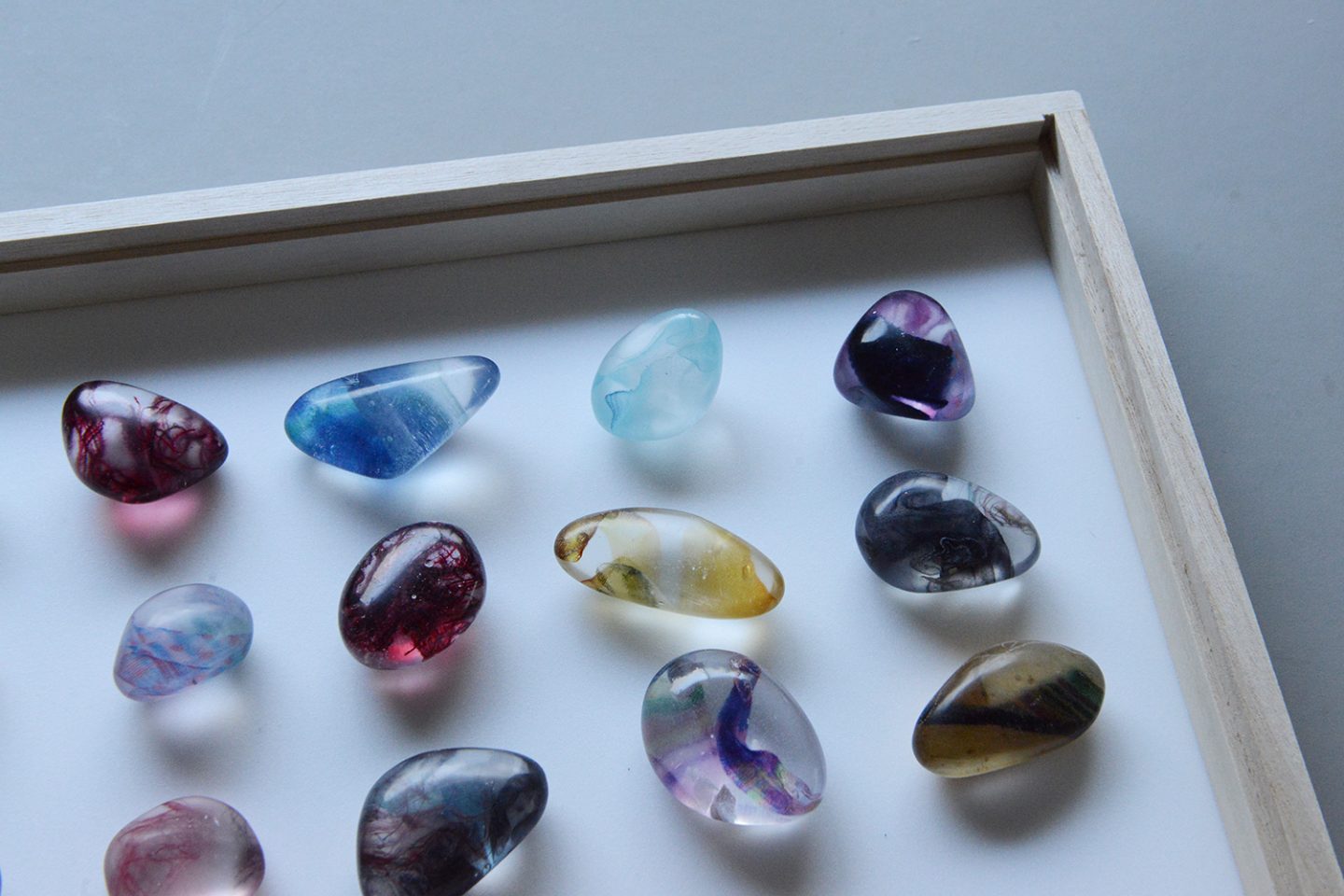
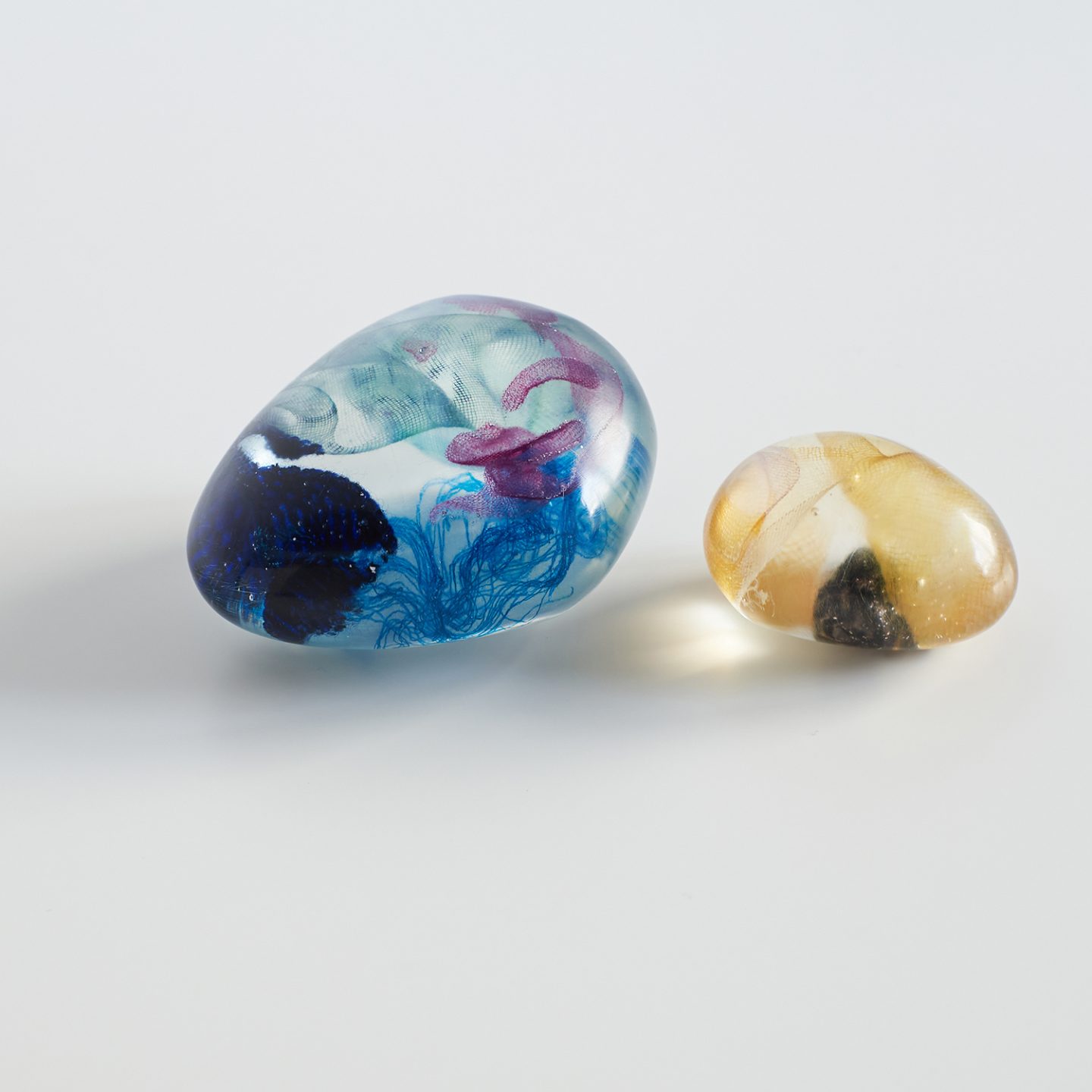
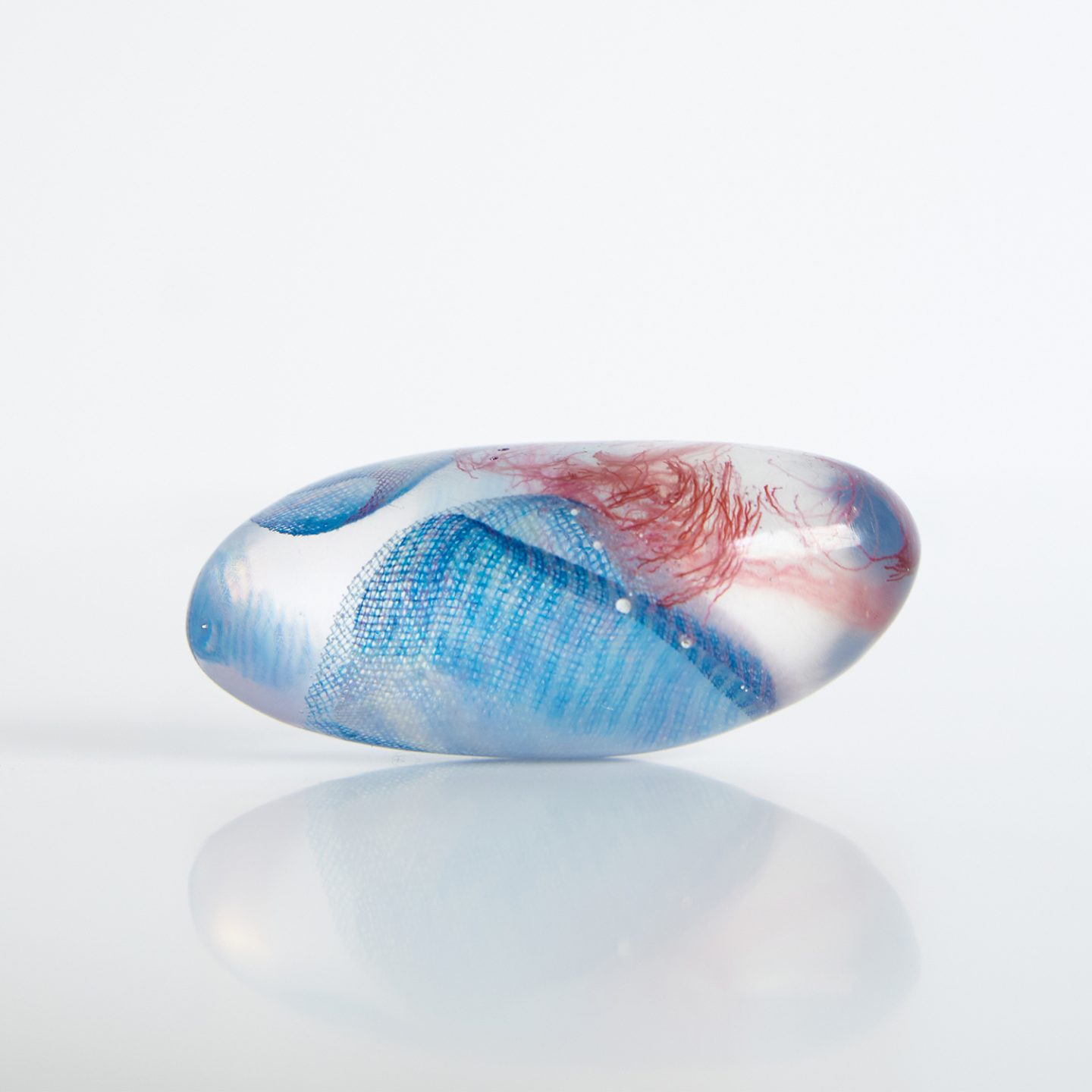
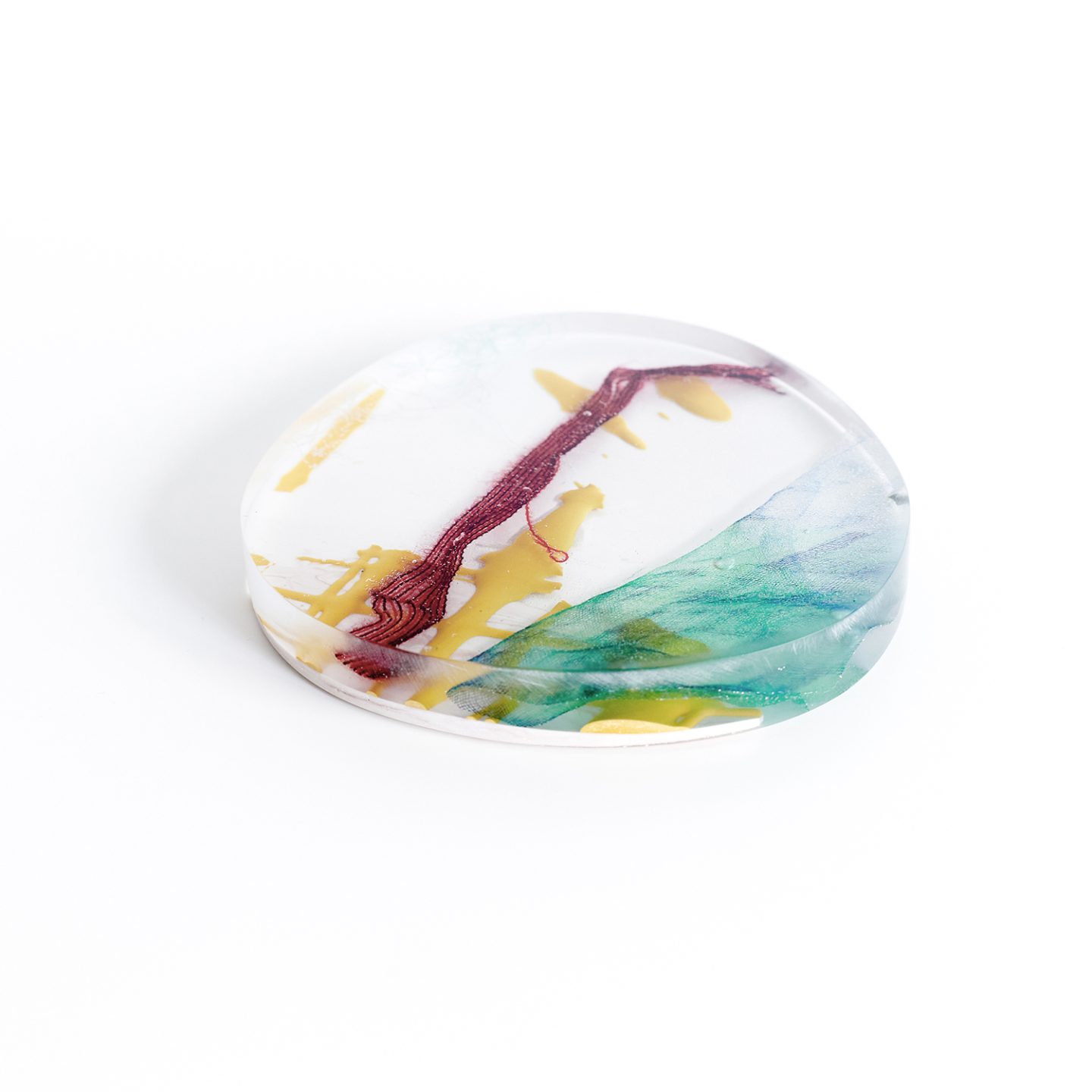
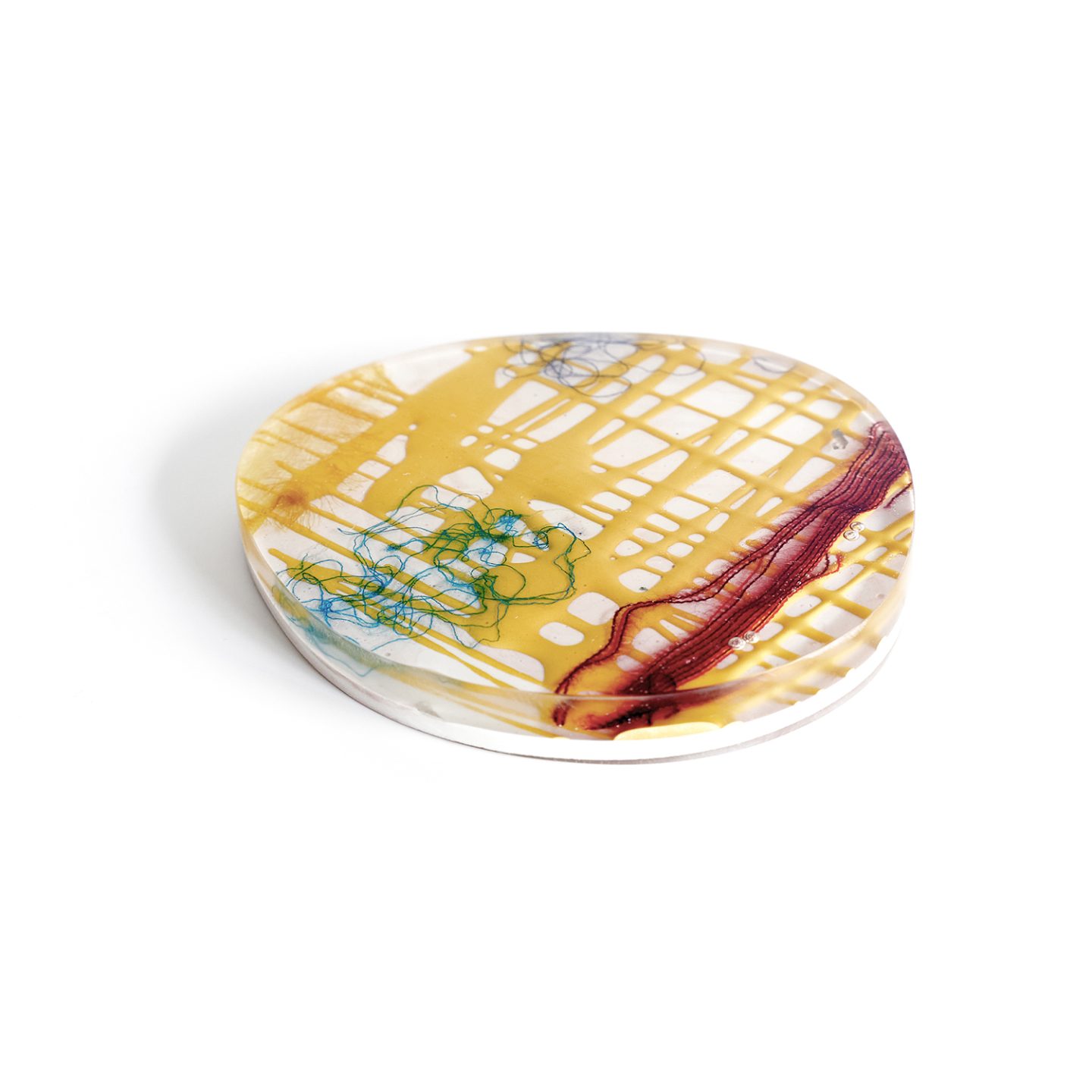
もう1つのアプローチとして、maticがグラフィック化したブロックを制作し、そのブロックを分割して一輪挿しを制作。丸枡染色はそのグラフィックをデータ化し、スカーフの模様として使用。イラストを使用するのではなく、立体的に造形された柄をスカーフの模様として採用することは新たな試みであると丸枡染色も試行錯誤しながらも楽しんで制作に取り組めたという。
As another approach, MATIC created a graphicized block, which was then divided to create a single-flower vase. For the Marumasu dyeing, the graphic was converted to data and used as the pattern for the scarf. Marumasu Dyeing enjoyed the process of creating the scarf, despite the trial and error involved, as it was a new attempt to use a three-dimensional pattern instead of an illustration.
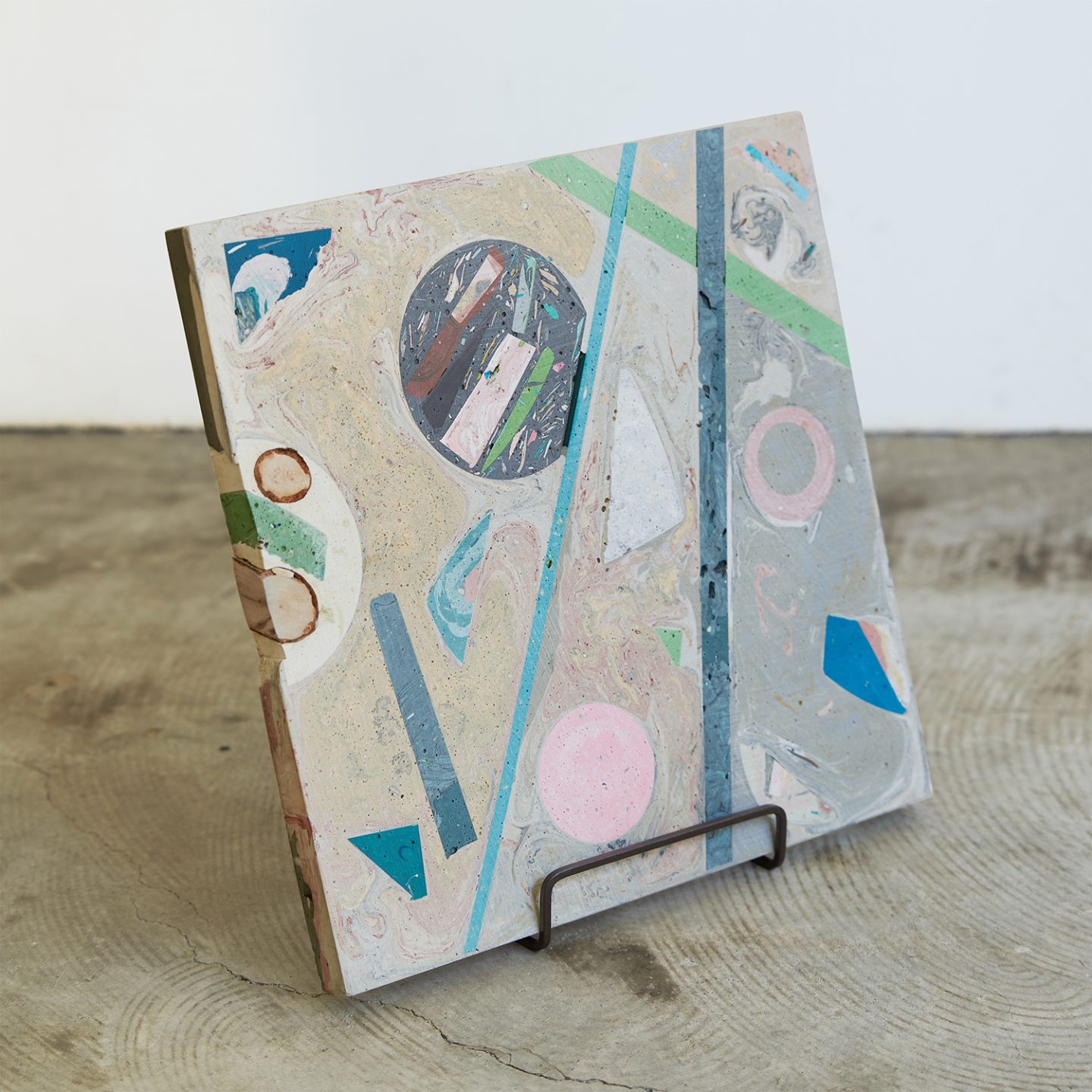
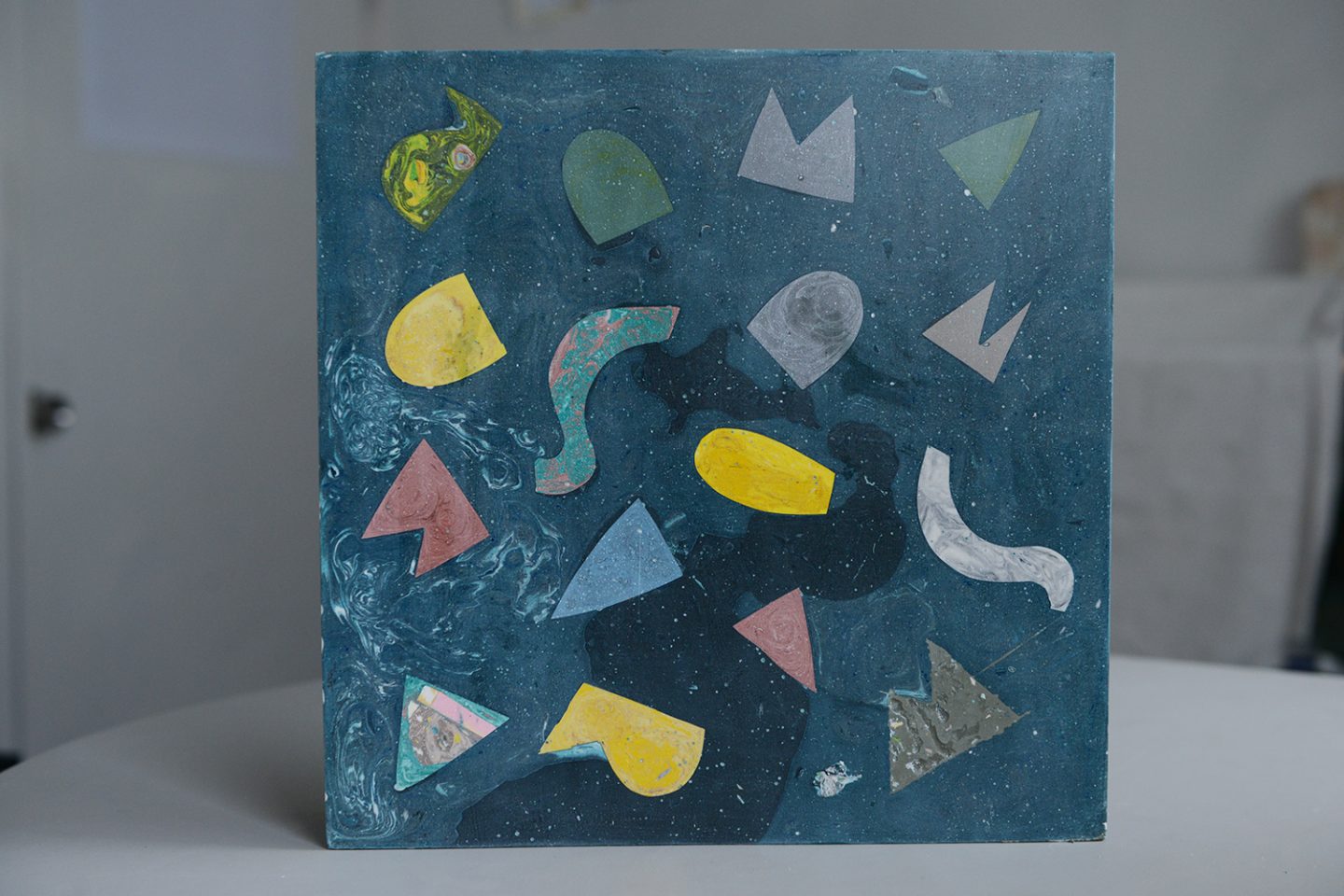
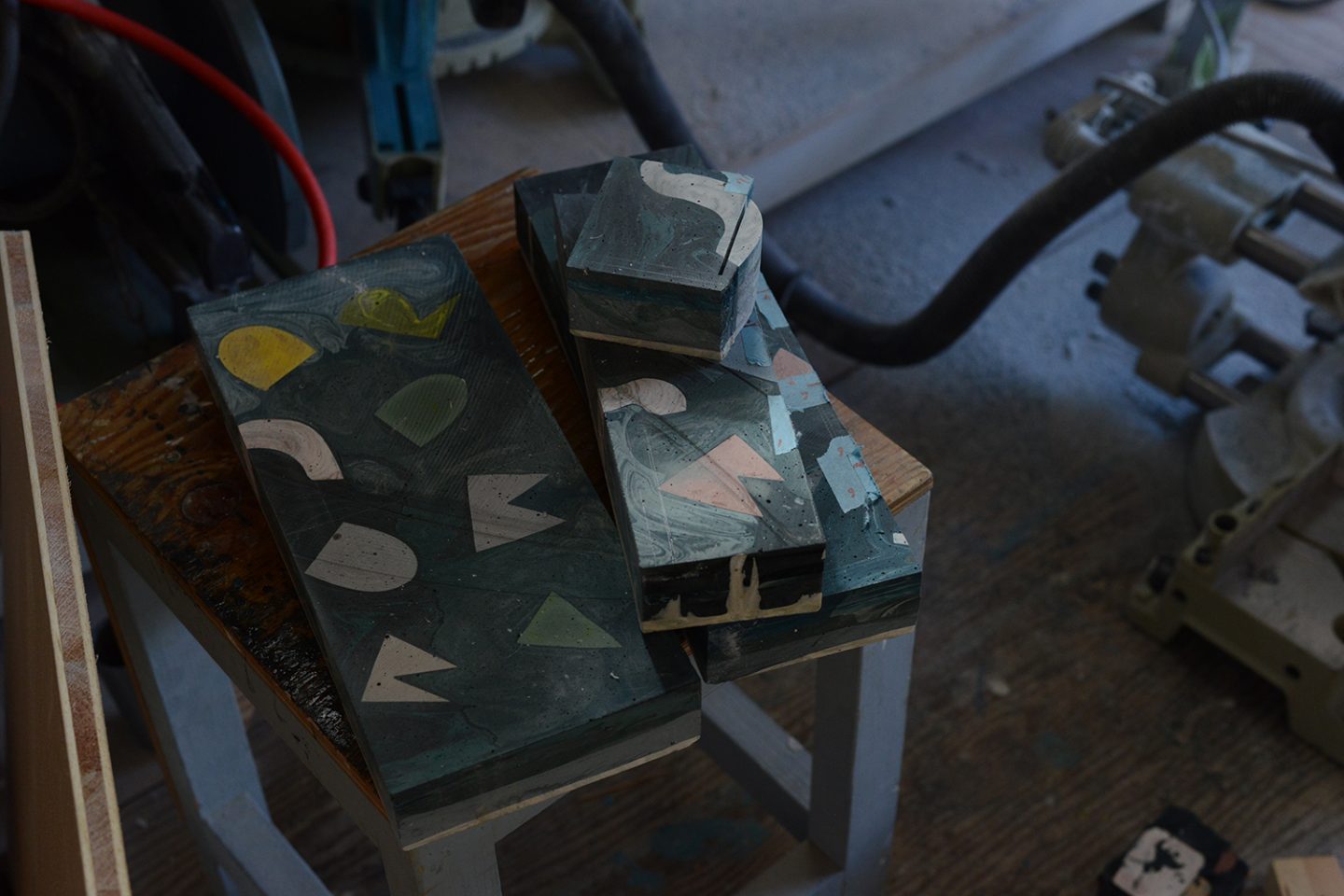

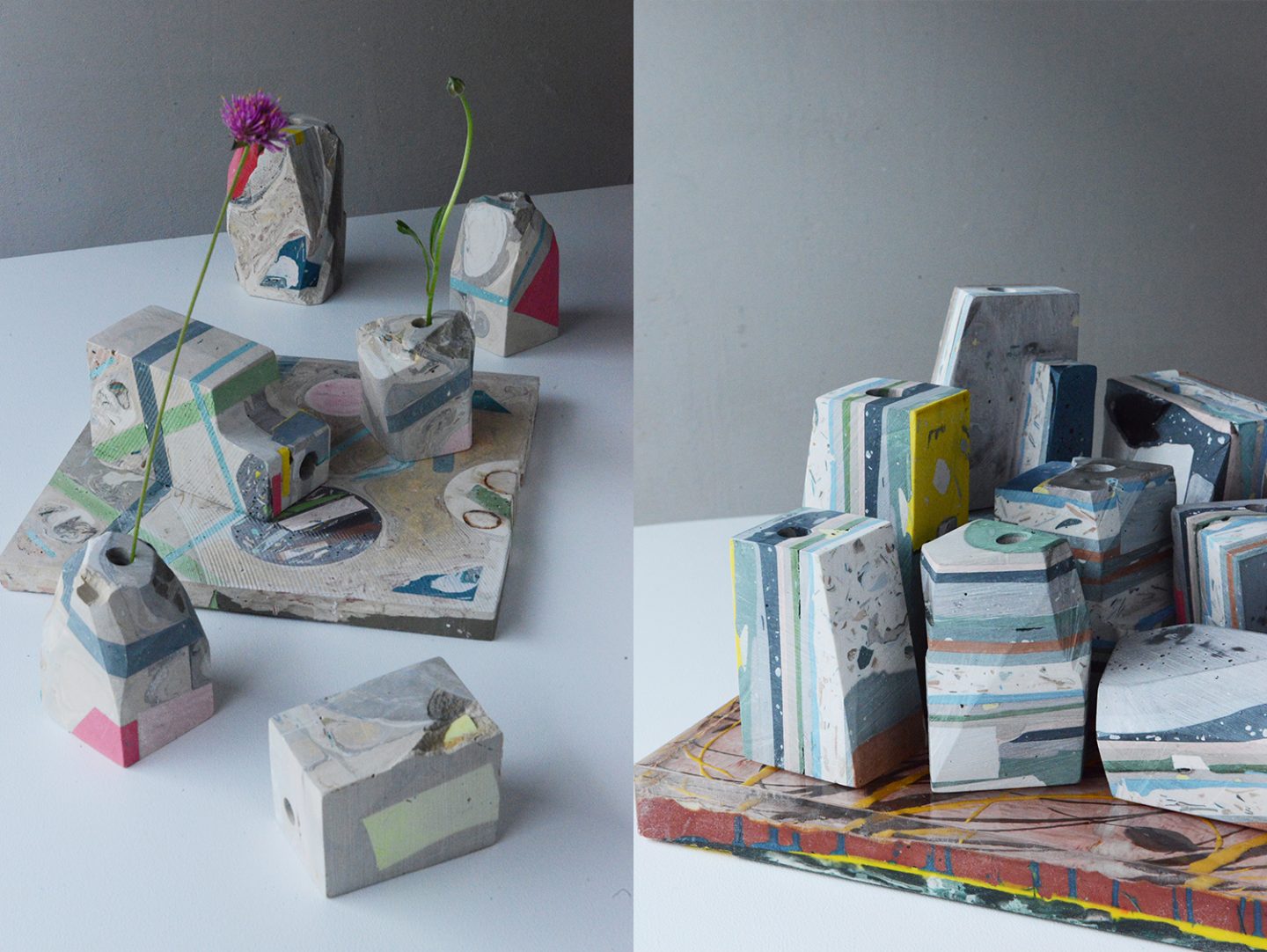
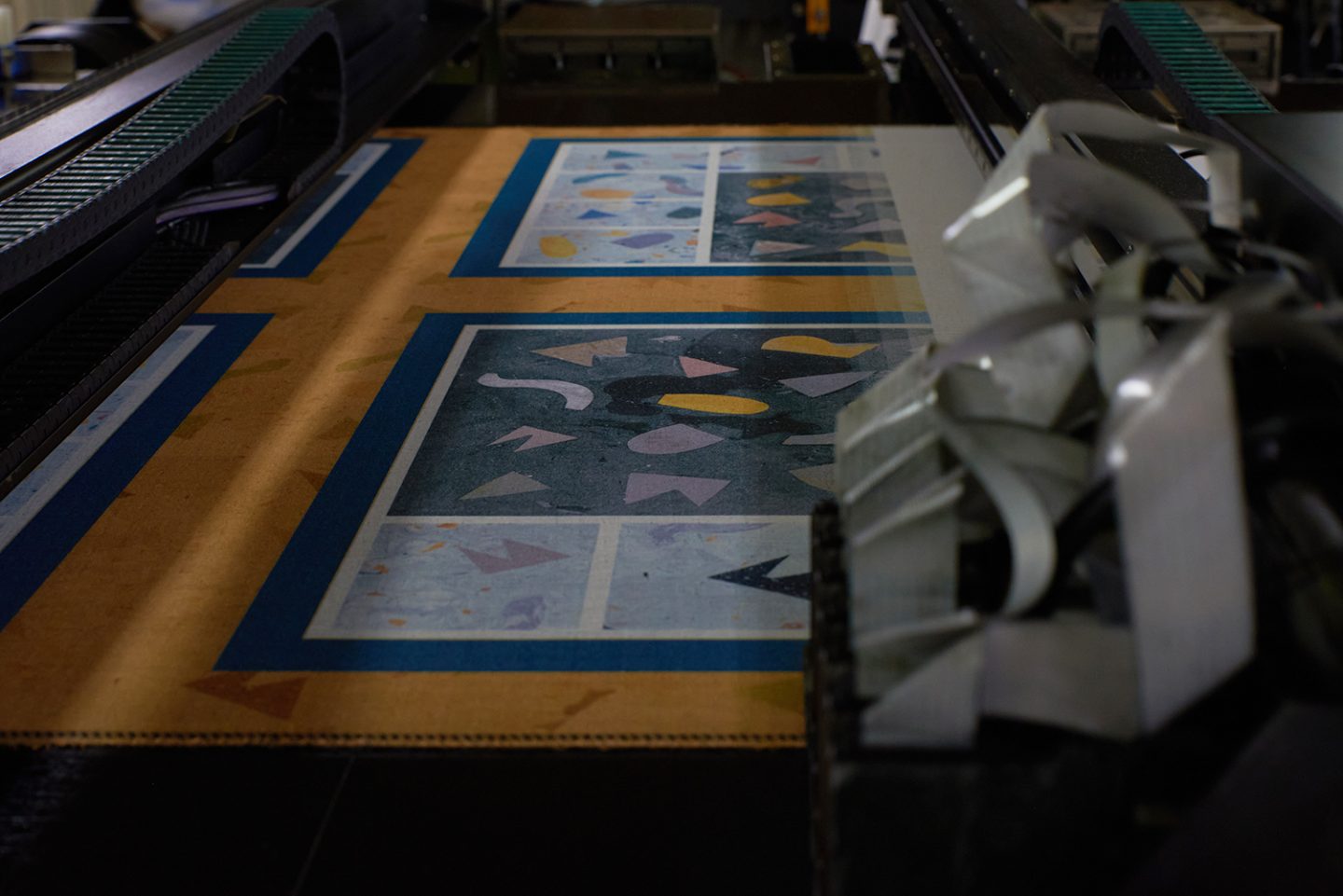

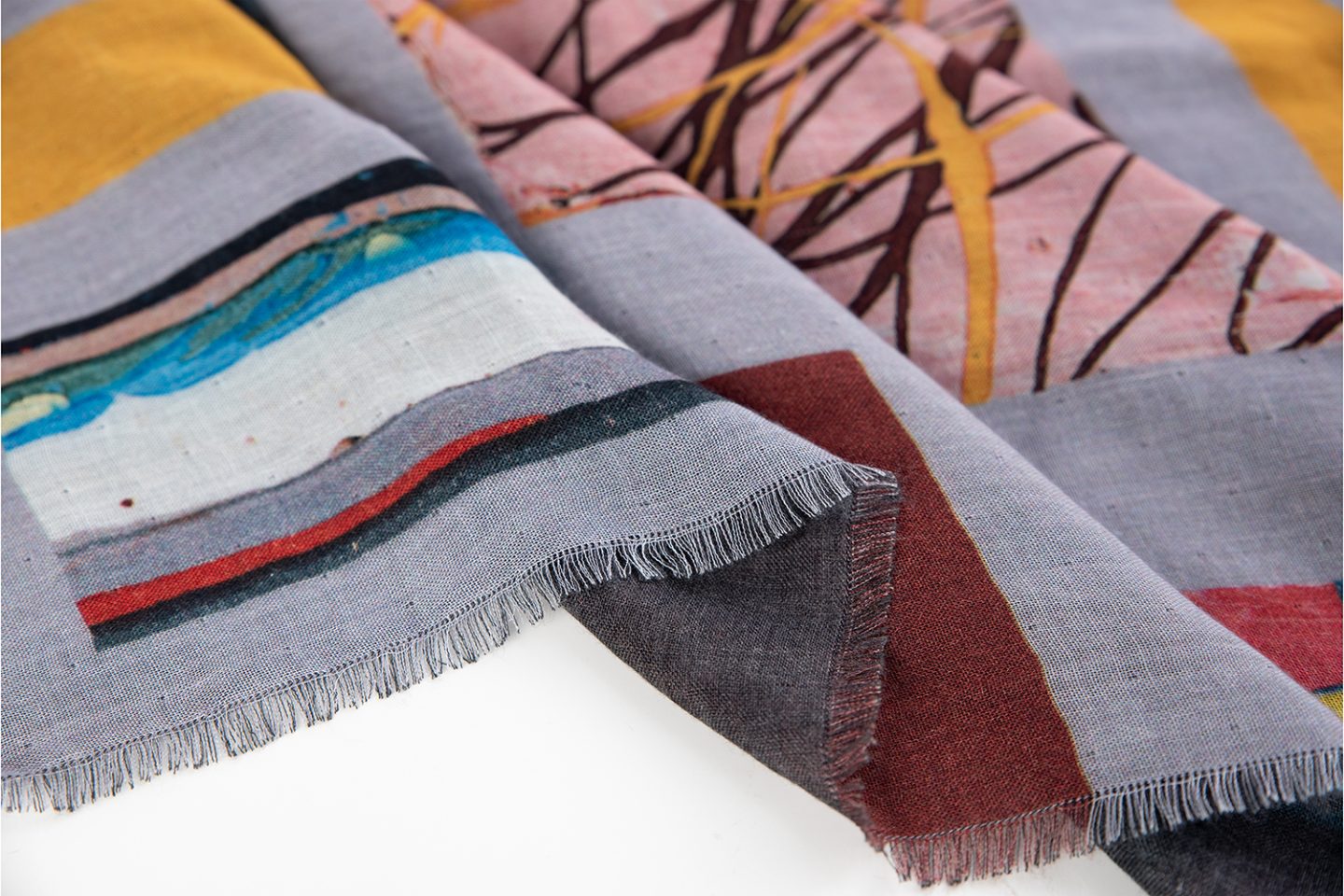
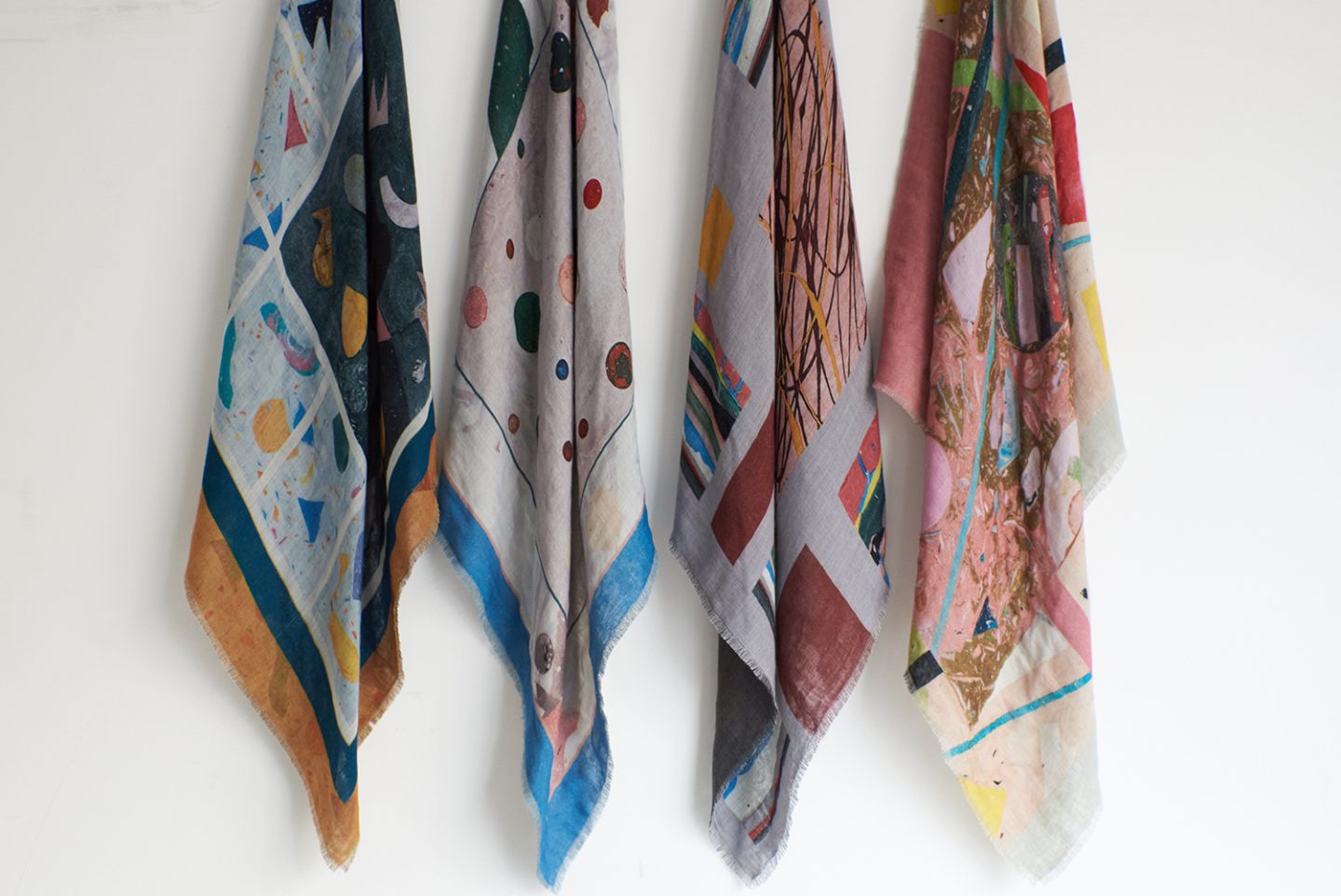
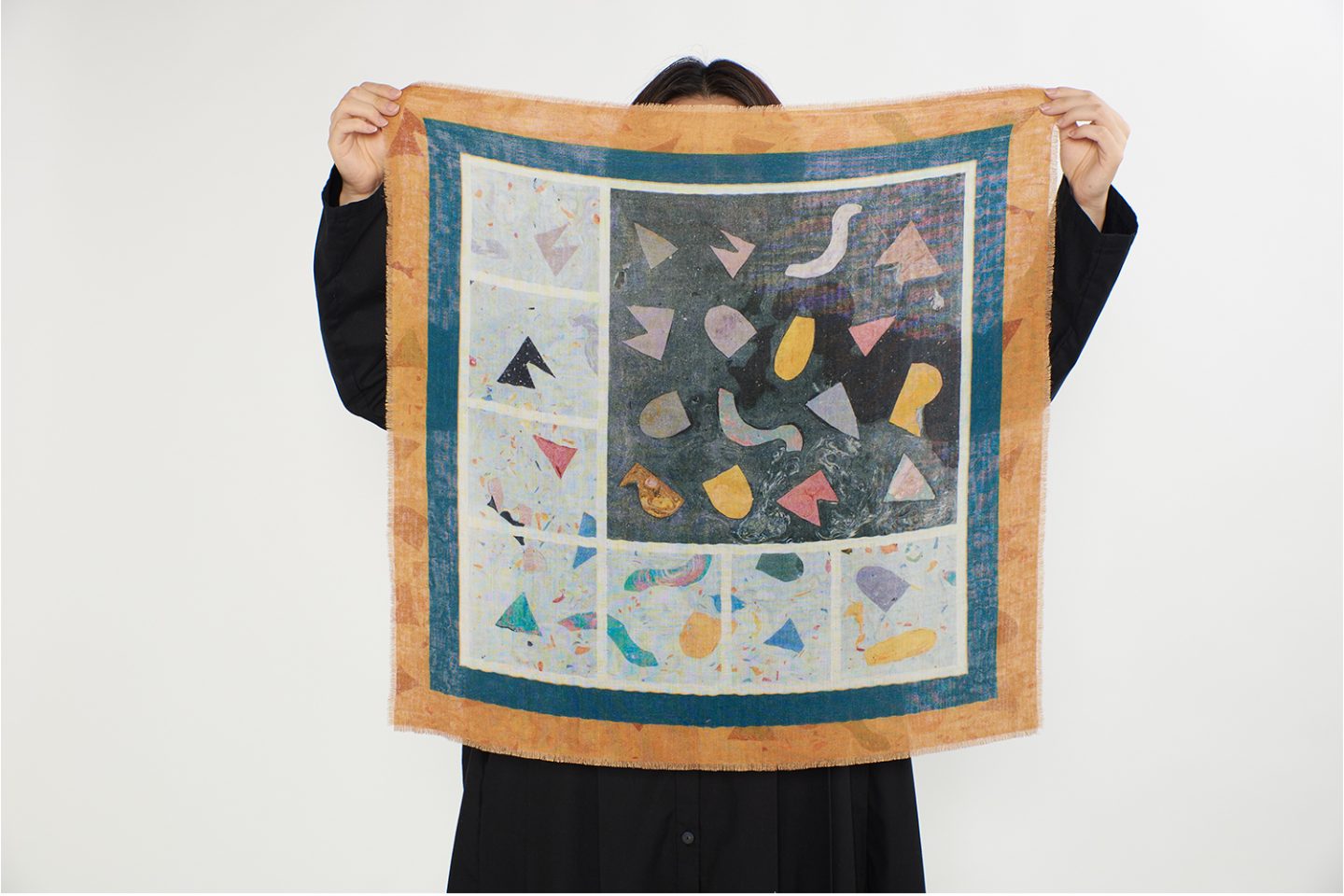
作品は丸枡染色の銀座の直営店にてお披露目された。コラボレーションというのはわかりやすいが時として浅はかなものになりやすかったり、無理やりこじつけたようになってしまったり、我々も意味のあるコラボレーションかと常に問いかけをしているのだが、今回の共同作業は無理がなく、そしてお互いの長所を活かしながら取り組めたのではないかと思う。試作の一片を標本的に展示し、作品が出来るまでの過程も見てもらうことで、よりその作品に愛着を持ってもらえると嬉しい。
The work was unveiled at Marumasu Dyeing’s directly managed store in Ginza. Collaboration is easy to understand, but sometimes it tends to be shallow or forced, and we are always asking ourselves whether it is a meaningful collaboration. I believe that we were able to work together without overdoing it, and we were able to utilize each other’s strengths. We hope that by exhibiting a piece of the prototype as a specimen and allowing visitors to see the process of how the work was created, they will become even more attached to the work.
